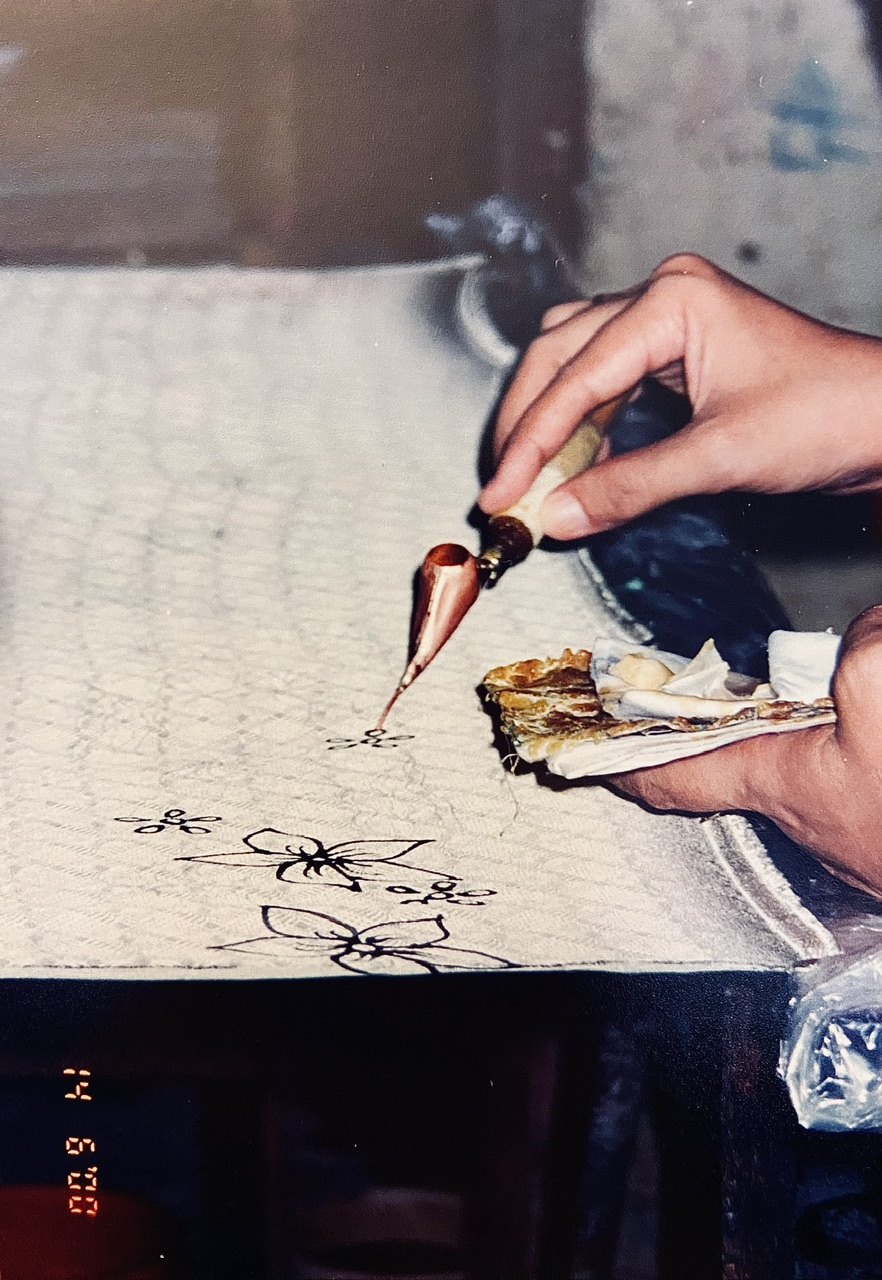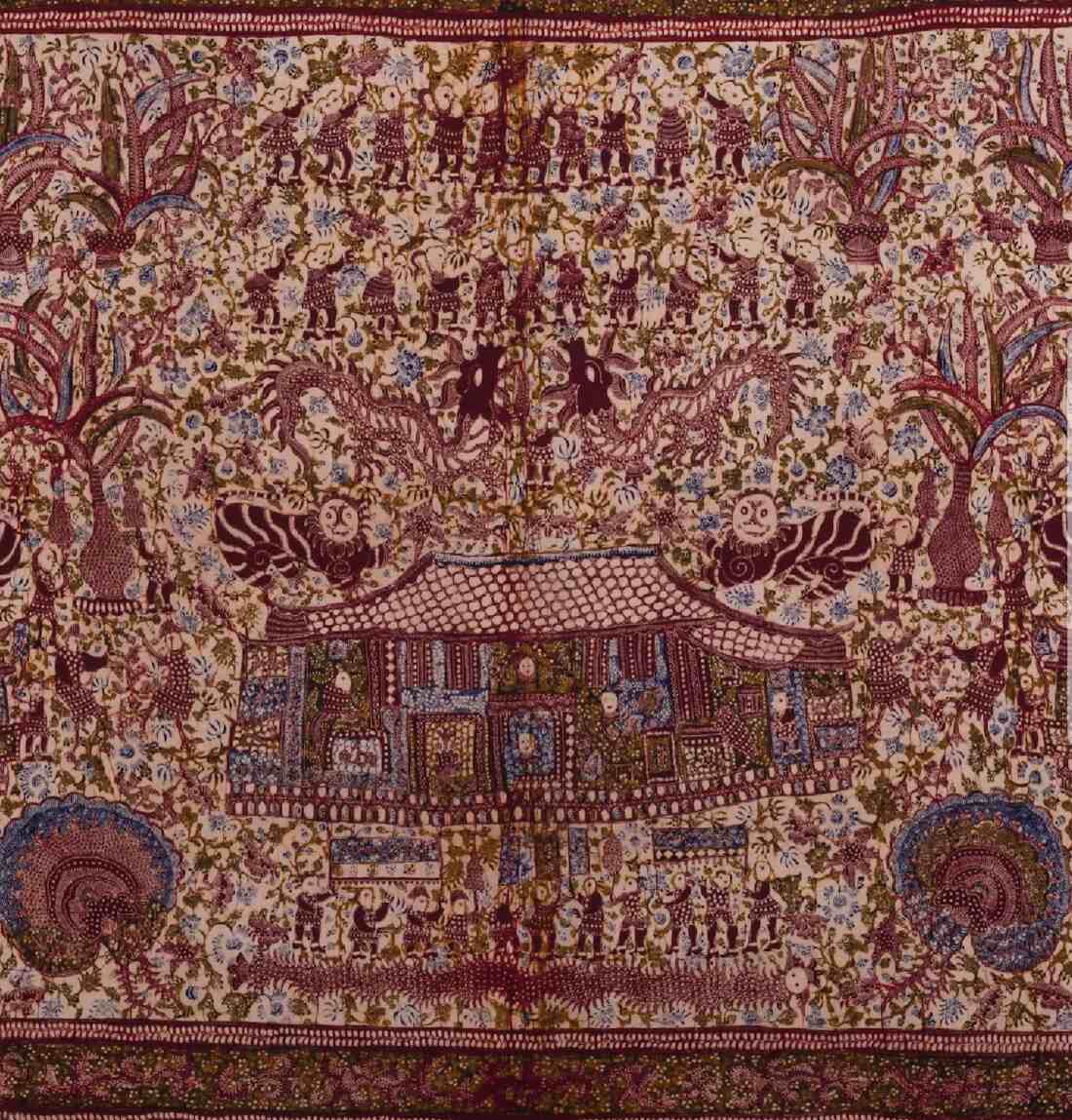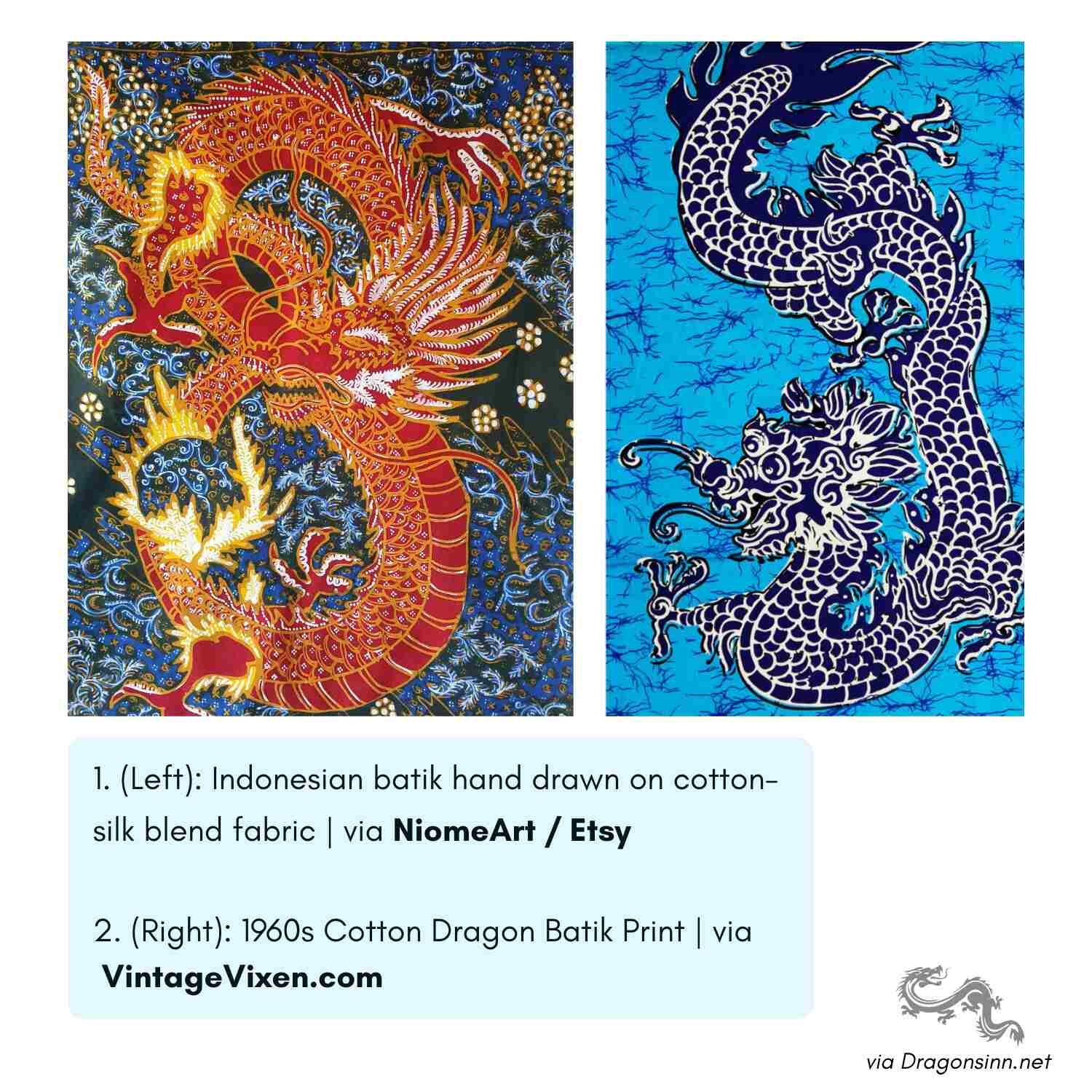Apparently, I have 22 draft posts and a bunch of other “post ideas” on my Trello board.
I’ll probably consolidate some as I noticed a few duplicates here and there.
Update on Dragon Poems
My dragon poetry collection is actually approaching completion, in terms of a (very messy) first draft.
It’s going to take another round of efforts to edit most of them to a better standard, then it should be good to go. ✨
I have a mock cover design in mind, too!
As a short break from all the poetry and writing, I thought I’d publish this fun and short visual post today, on dragon batik print motifs.
What is Batik?
Batik is both an art and a craft, which involves decorating cloth using wax and dye. It’s been practised for centuries in many parts of the world.
In Java, an Indonesian island, batik is part of an ancient tradition.
The word batik comes from the Javanese word “tik” which means to dot.
Batik is usually made on fabric (like cotton, silk, or hemp), but the techniques can also be used on paper and other surfaces.
NOTE #1: Long ago when I visited Malaysia, I took a nice up-close photograph of someone hand-painting a batik fabric.
I’ll add that photo to this post if I manage to find it. I found the pic and here it is!

NOTE #2: IIRC, I had some smaller drafts of Indonesian or Southeast Asian dragons sitting around somewhere, so I’ll cross-reference this post if I manage to cobble together something.
Batik and Embroidery Dragon Motifs
While I saw lots of batik prints growing up in Singapore, I don’t remember seeing lots of dragon prints.
I’ve heard that Singapore’s batik scene leans more toward floral and geometric motifs, especially in Peranakan and Malay styles.
There are embroidery dragon motifs in Nyonya kebaya outfits (like in the link above), so I’ll do another short follow-up post after this one on batik motifs.
Dragon Batik Prints
Dragons are often tucked into Chinese-influenced batik from Java or Lasem, where they’re part of a more collective mythic visual.
Here’s a small selection that showcase these visually stunning and strong motifs.
Bespoke Batik by Garuda Kencana
I’ve embedded two posts via @garudakencana on Instagram.
If you can’t view the embedded images and text on your screen, here are direct links:
- The Naga motif in Indonesian Batik (video; 2023)
- Gold and red Naga batik, symbolizing power, authority, and cosmic balance (image; 2025)
Lasem Batik
In Indonesian batik, especially from coastal regions like Lasem, dragons appear as part of a broader Chinese cultural influence.

Batik Pesisiran, or coastal batik, is also influenced by Dutch, Arab, Indian, and Chinese cultures. This style of batik is diverse and a fusion of local and foreign cultures.
Lasem batik often features phoenixes and dragons—symbols of power and protection. These motifs are rendered in bold hues and intricate linework, echoing centuries of trade and exchange.
Vintage and Ocean Vibes

Left red dragon batik image via NiomeArt/Etsy
Right 1960’s blue dragon batik motif via VintageVixen.com
I came across this batik tulis (i.e. hand-drawn batik) from Java on Etsy (via NiomeArt).
Batik tulis is created via a lengthy process called the wax resist method. The wax is applied on the area where the fabric should not be dyed, using a pen-like tool. After this process, the fabric is then being submerged in the dye several times.
This method makes hand drawn batik unique, as the imperfect lines add to the feel of the design.
The 1960s blue dragon batik print from VintageVixen.com, is technically faux batik (as it’s printed, not wax-resist dyed).
However it channels the same mystique in a great colour scheme, which is great for a sarong or summer/ocean-inspired fashion.
Dragon batik designs are highly vivid, reminding us of how the fabric we wear reflects the myths and spirit of a culture.

